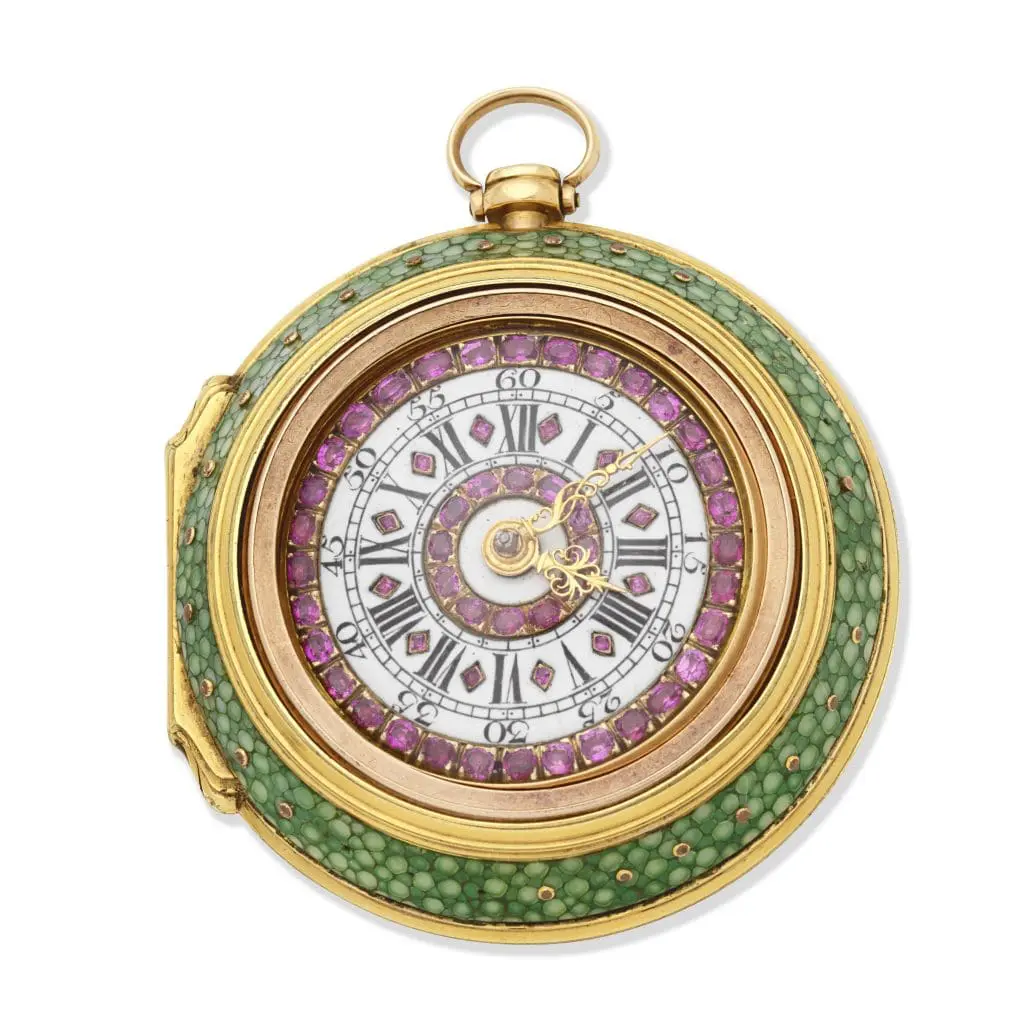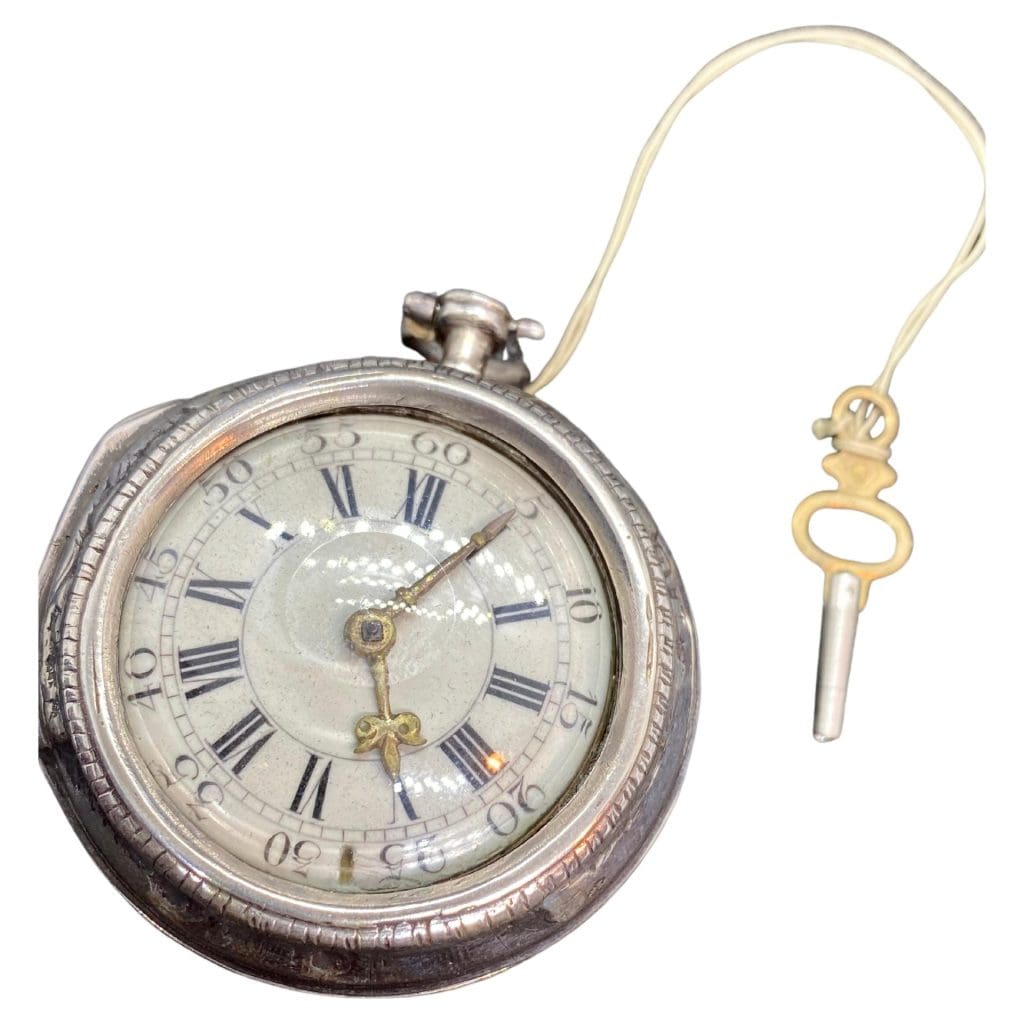Antique pocket watches are fascinating timepieces that have stood the test of time. These watches are not only valuable but also carry a lot of sentimental and historical significance. However, cleaning antique pocket watches is a delicate process that requires extra care to prevent damage. In this blog post, we will explore proper cleaning techniques for antique pocket watches, as well as their history, identifying valuable pieces, common mistakes to avoid, and maintenance tips to preserve their value and function for years to come.
History of Antique Pocket Watches
Antique pocket watches have a rich history dating back to the 16th century. The first pocket watches were actually designed for women to wear as necklace watches, but it wasn’t until the late 19th century that pocket watches became popular for men, as they replaced the bulkier and less convenient pocket watch styles.
Over time, antique pocket watches evolved with features like key winding and automatic winding mechanisms. They have also been made with a variety of materials, including gold, silver, and enamel.
However, some of the most valuable antique pocket watches were made by famous watchmakers like Patek Philippe, Vacheron Constantin, and Audemars Piguet. Their rarity, condition, age, and brand all play a role in determining the value of an antique pocket watch. Collectors often look for unique features like gold or enamel dials, skeletonized movements, and special complications like chronographs.

Identifying Valuable Antique Pocket Watches
The value of an antique pocket watch is determined by various factors, including its rarity, condition, age, and brand. Some of the factors to consider when identifying valuable antique pocket watches include:
- Rarity: Watches that were produced in limited quantities or have unique features, like a particular design or complication, can be more valuable.
- Condition: A watch in good condition, with its original parts and no damage, will generally be more valuable than one that has been restored or has replaced parts.
- Age: Older watches, especially those that are in good condition, may be more valuable due to their rarity and historical significance.
- Brand: Antique pocket watches made by well-known and esteemed watchmakers tend to have a higher value, especially those from makers like Patek Philippe, Vacheron Constantin, and Audemars Piguet.
Collectors and enthusiasts often look for unique features like gold or enamel dials, skeletonized movements, and special complications like chronographs. Ultimately, the value of an antique pocket watch is determined by a combination of these factors and can vary greatly depending on the individual watch.
The Importance of Proper Antique Pocket Watch Cleaning
Antique pocket watches are delicate and valuable timepieces that require proper cleaning to maintain their condition and functionality. Cleaning an antique pocket watch is essential for several reasons:
- Prevent damage: Proper cleaning helps prevent damage to the watch’s delicate mechanisms and components. Dirt and debris can cause wear and tear on the watch’s parts, leading to decreased performance, accuracy, and value.
- Ensure accuracy: Dirt and debris can build up in the watch, affecting its performance and accuracy. Regular cleaning ensures that the watch continues to work accurately and display the correct time.
- Reveal hidden damage: Proper cleaning can reveal hidden damage or wear that should be addressed before it causes larger issues. A professional watchmaker can identify any issues and perform necessary repairs during a routine cleaning.
Cleaning an antique pocket watch requires specific tools and techniques to avoid damaging the watch. While some collectors may attempt to clean their pocket watches at home, it is essential to seek the advice of a professional watchmaker to ensure the proper cleaning process.
Neglecting to clean an antique pocket watch can result in long-term damage and decreased value. By taking the time to clean and maintain the watch properly, it can continue to function and retain its value for generations to come.
Tools Needed for Cleaning Antique Pocket Watches
Proper cleaning of antique pocket watches requires the following tools:
- Soft-bristled brushes: These brushes are gentle enough to clean delicate parts of the watch without causing any damage.
- Blower: A blower is used to dislodge debris from the watch without scratching or scuffing the surface.
- Cleaning solution: A cleaning solution specifically created for antique watches is necessary to avoid damaging the watch’s delicate parts.
- Pegwood stick: A pegwood stick is useful for removing debris from tight spaces.
- Cleaning machine: A specialized cleaning machine or an ultrasonic cleaner may be used for deep cleaning, if necessary.
Step-by-Step Guide to Cleaning Antique Pocket Watches
Proper cleaning of an antique pocket watch can prevent damage and ensure it continues working accurately. Here is a step-by-step guide to cleaning your antique pocket watch:
- Disassemble the Watch: Fully disassemble the watch and remove any debris using a soft-bristled brush and a blower. This will ensure that you can access all the parts that need cleaning.
- Soak the Watch: Soak the watch in a specialized cleaning solution that is safe for antique watches. Use a soft brush to remove any remaining dirt. Be sure to avoid harsh detergents or solvents that can damage the watch’s delicate parts.
- Rinse the Watch: Rinse the watch in distilled water to remove any residual cleaning solution.
- Dry the Watch: Dry the watch thoroughly using a hairdryer set to its lowest heat setting or a gentle heat source like a light bulb. Be sure to avoid exposing the watch to extreme temperatures or using too much heat, which can damage the watch.
- Reassemble the Watch: Once the watch is fully dry, reassemble it carefully, taking care not to damage any of its delicate parts.
- Lubricate the Watch: After reassembling the watch, apply a small amount of specialized watch lubricant to the moving parts so that they can move more freely.
- Test the Watch: Finally, test the watch to make sure it is working accurately. Set the time and make sure that all the hands are moving smoothly and accurately.
Cleaning your antique pocket watch may require specialized cleaning tools and solutions, so it may be best to seek the advice of a professional watchmaker.

Common Mistakes to Avoid When Cleaning Antique Pocket Watches
- Using harsh chemicals or solutions: It is important to use a cleaning solution that is safe for antique watches, as harsh chemicals or solutions can damage the watch or its parts.
- Not fully disassembling the watch: Failing to fully disassemble the watch can leave debris and detergents trapped inside, potentially causing damage over time.
- Using too much force or pressure when cleaning: Applying too much force or pressure when cleaning can easily damage delicate parts and mechanisms. It is best to clean the watch gently using soft-bristled brushes and a blower for dislodging debris.
- Skipping the drying step: Moisture left behind after cleaning can cause damage or corrosion, so it is important to dry the watch thoroughly using a hairdryer or a gentle heat source.
By avoiding these common mistakes, you can help ensure that your antique pocket watch remains in excellent condition for years to come.
Maintenance Tips for Antique Pocket Watches
Antique pocket watches require proper maintenance to ensure their longevity and value. Here are some tips to keep your antique pocket watch in top condition:
Regular Cleaning and Servicing
Having your antique pocket watch serviced every few years by a professional watchmaker will help keep it in good condition. This includes cleaning the watch, lubricating the components, and inspecting for any potential issues. Regular cleaning can also prevent dirt and debris buildup, which can affect the watch’s performance.
Avoid Extreme Temperatures and Humidity
Antique pocket watches should be kept in a cool, dry place. Extreme temperatures and high levels of humidity can damage the delicate mechanisms inside the watch. Avoid exposing the watch to direct sunlight, as this can cause discoloration and other damage.
Store Separately
When storing your antique pocket watch, keep it away from other jewelry and metal objects to prevent scratches or other damage. Use a soft carrying case or a protective watch box to protect it from dust and other debris.
Avoid Exposure to Water
Avoid exposing your antique pocket watch to water or other liquids, as this can cause damage to the delicate mechanisms. If the watch gets wet accidentally, dry it immediately and have it inspected by a professional watchmaker.
If you notice any issues with your antique pocket watch, such as a change in timekeeping accuracy or unusual sounds, seek professional help from a certified watchmaker. Attempting to fix the issue yourself can cause more damage to your valuable antique.

Dealing with Rust and Corrosion on Antique Pocket Watches
Rust and corrosion can be a nightmare for antique pocket watch owners. Powering an antique is a complex system where many tiny, delicate parts must work together smoothly, so rust and corrosion can wreak havoc with a watch’s delicate mechanisms and lead to significant damage. Here are some tips on how to deal with rust and corrosion on antique pocket watches:
Removing Rust and Corrosion
If you discover rust or corrosion on your pocket watch’s delicate mechanism, it’s best to seek professional help right away. A professional antique watchmaker will have specialized tools and expertise to remove rust and corrosion without further damaging the watch’s mechanisms. Keep in mind that this is not a DIY task.
Preventing Rust and Corrosion
Preventing rust and corrosion is always the best course of action. Here are some prevention methods:
- Store the watch in a dry, cool place away from humidity and moisture.
- Avoid exposing the watch to water and moisture.
- Have your watch professionally serviced and cleaned regularly to ensure rust and corrosion are prevented.
- Handle your antique pocket watch with care to avoid scratches and damage to the delicate mechanisms.
By following these simple tips, you can keep your antique pocket watch free from rust and corrosion and ensure it lasts for generations to come. Remember, prevention is always better than trying to fix damage that’s already happened.
Storing Antique Pocket Watches: Do’s and Don’ts
When it comes to storing antique pocket watches, proper storage is essential for preventing damage and ensuring the watch stays in good condition. Here are some do’s and don’ts to keep in mind:
Do:
- Store the watch in a dry, cool place with low humidity to minimize potential damage.
- Keep the watch in a dust-free environment.
- Store the watch in a soft-lined case or pouch to protect it from scratches and other damage.
Don’t:
- Store the watch near sources of heat or extreme temperatures, as this can cause damage to the delicate mechanisms.
- Keep the watch in direct sunlight, as this can cause discoloration and other damage to the watch.
- Store the watch with other jewelry or metal objects, as this can potentially scratch or damage the watch.
- Expose the watch to moisture or liquid, as this can cause rust and other damage to the mechanisms.
Remember to always handle your antique pocket watch with care, whether you are cleaning it or storing it. With proper storage and maintenance, your antique pocket watch can continue to be a valuable and cherished heirloom for years to come.
Conclusion
Proper cleaning is essential for maintaining the value and performance of an antique pocket watch. It is important to identify valuable vintage watches and use appropriate cleaning tools and techniques to avoid damage to the watch’s delicate parts. Regular maintenance from a professional watchmaker can help avoid any potential issues caused by rust and corrosion. Finally, proper storage can also help preserve the watch’s value and increase its lifespan. By following these tips, antique pocket watches can remain valuable and functional for generations to come.

